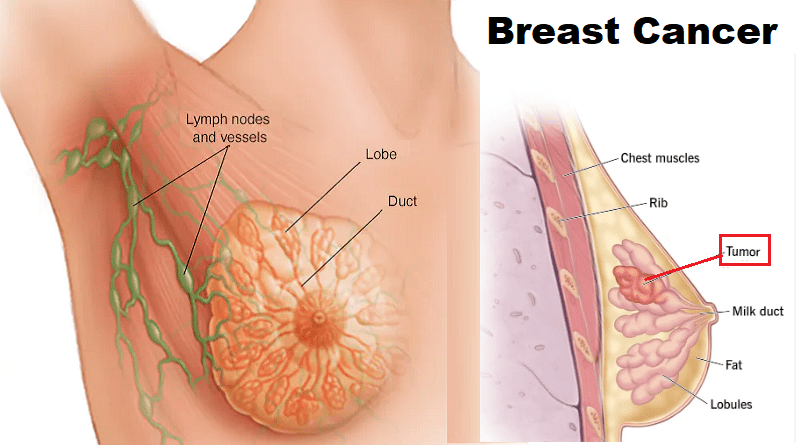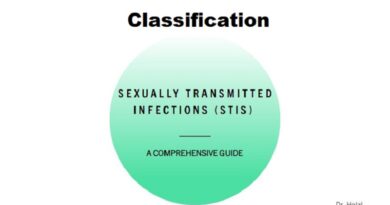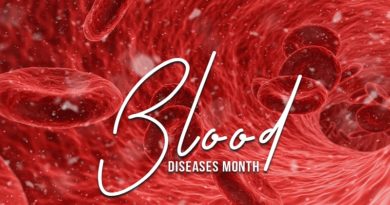Breast Cancer: Unveiling the Truth
Breast cancer affects millions of women worldwide, yet it remains shrouded in mystery and fear. It is the most common cancer among women globally, accounting for many cancer-related deaths. To empower women with knowledge and dispel the myths surrounding this disease, let’s understand what this serious health condition truly is. In this article, we explore breast cancer, its causes, risk factors, symptoms, and available treatment options.
Breast Cancer Overview
It is a malignant tumor that originates in the cells of the breast. These cells undergo abnormal growth and multiplication, forming a lump or mass that can invade nearby tissues. Like other cancers, breast cancer can invade and grow into the tissue surrounding your breast, and also travel to other parts of your body and form new tumors which are called metastasis.
Who is mainly affected by breast cancer? It can affect both men and women, although it is much more common in women. It is one of the most common cancers among women, second only to skin cancer. It affected mainly women age 50 and above.
Causes and Risk Factors
While the exact causes are not fully understood, several risk factors have been identified. Some of the primary risk factors include:
- Age and Gender:
Advancing age and being female are significant risk factors. The risk of developing breast cancer increases with age, especially after menopause. - Genetic Mutations:
Inherited mutations in certain genes, such as BRCA1 and BRCA2, can significantly increase the risk of breast cancer. However, it’s important to note that only a small percentage of breast cancer cases are directly linked to these genetic mutations. - Family History:
Having a first-degree relative (mother, sister, or daughter) with breast cancer increases an individual’s risk. However, it’s crucial to remember that most individuals with breast cancer have no family history of the disease. - Hormonal Factors:
Prolonged exposure to estrogen, such as early menstruation, late menopause, and long-term hormone replacement therapy, can increase the risk of breast cancer. - Lifestyle Factors:
Unhealthy lifestyle choices, such as excessive alcohol consumption, smoking, lack of physical activity, and obesity, can contribute to an increased risk of breast cancer.
Signs and Symptoms
Early findings of the condition can significantly improve outcomes. Here are the common signs and symptoms:
- Breast lump or thickening that feels different from surrounding tissue.
- Changes in breast size or shape.
- Dimpling or puckering of the breast skin.
- Nipple changes, such as inversion, redness, or discharge.
- Swelling or lumps in the underarm area.
These symptoms do not necessarily indicate breast cancer, as they can also be caused by benign conditions. But, any persistent changes should be promptly discussed with a healthcare professional.
Diagnosis and Screening
Like any disease, early detection is important for treating the cancer. Regular breast self-examinations, clinical breast examinations, and mammograms are the screening tools. Mammography is currently the most effective method for detecting breast cancer in its early stages, even before symptoms are noticeable.
If a suspicious finding is detected through screening or physical examination, further diagnostic tests, such as ultrasound, magnetic resonance imaging (MRI), or biopsy, may be required. These tests help determine the nature of the abnormality and make an accurate diagnosis.
Treatment Options
The treatment depends on various factors, including the stage of the cancer, tumor characteristics, and the individual’s overall health. Common treatment options include:
- Surgery:
This involves removing the tumor and, in some cases, surrounding lymph nodes. Surgical options may range from lumpectomy (removal of the tumor) to mastectomy (removal of the entire breast). - Radiation Therapy:
High-energy beams are used to kill cancer cells and reduce the risk of recurrence after surgery. It is often recommended after breast-conserving surgery or mastectomy. - Chemotherapy:
Medications are used to destroy cancer cells throughout the body. Chemotherapy is often administered before surgery to shrink tumors or after surgery to eliminate remaining cancer cells. - Hormonal Therapy:
Certain breast cancers are hormone receptor-positive, meaning they depend on hormones like estrogen or progesterone for growth. In this case, hormonal therapy can block these hormones or interfere with their action, reducing the risk of recurrence. - Targeted Therapy:
Some breast cancers exhibit specific genetic mutations. These therapies specifically target these genetic abnormalities, preventing cancer growth and spread.
SUMMARY
Breast cancer is a complex disease that demands attention, awareness, and proactive measures. By understanding what breast cancer truly is, its causes, risk factors, symptoms, and available treatment options, we can empower ourselves and our loved ones. Regular screenings, self-examinations, and a healthy lifestyle are important for early detection and successful treatment.
If you suspect that you may have symptoms, Helalmedical can help, offering quick, private, and convenient testing options. You may contact us here: Facebook page.
Discover more from Helal Medical Manila
Subscribe to get the latest posts sent to your email.




